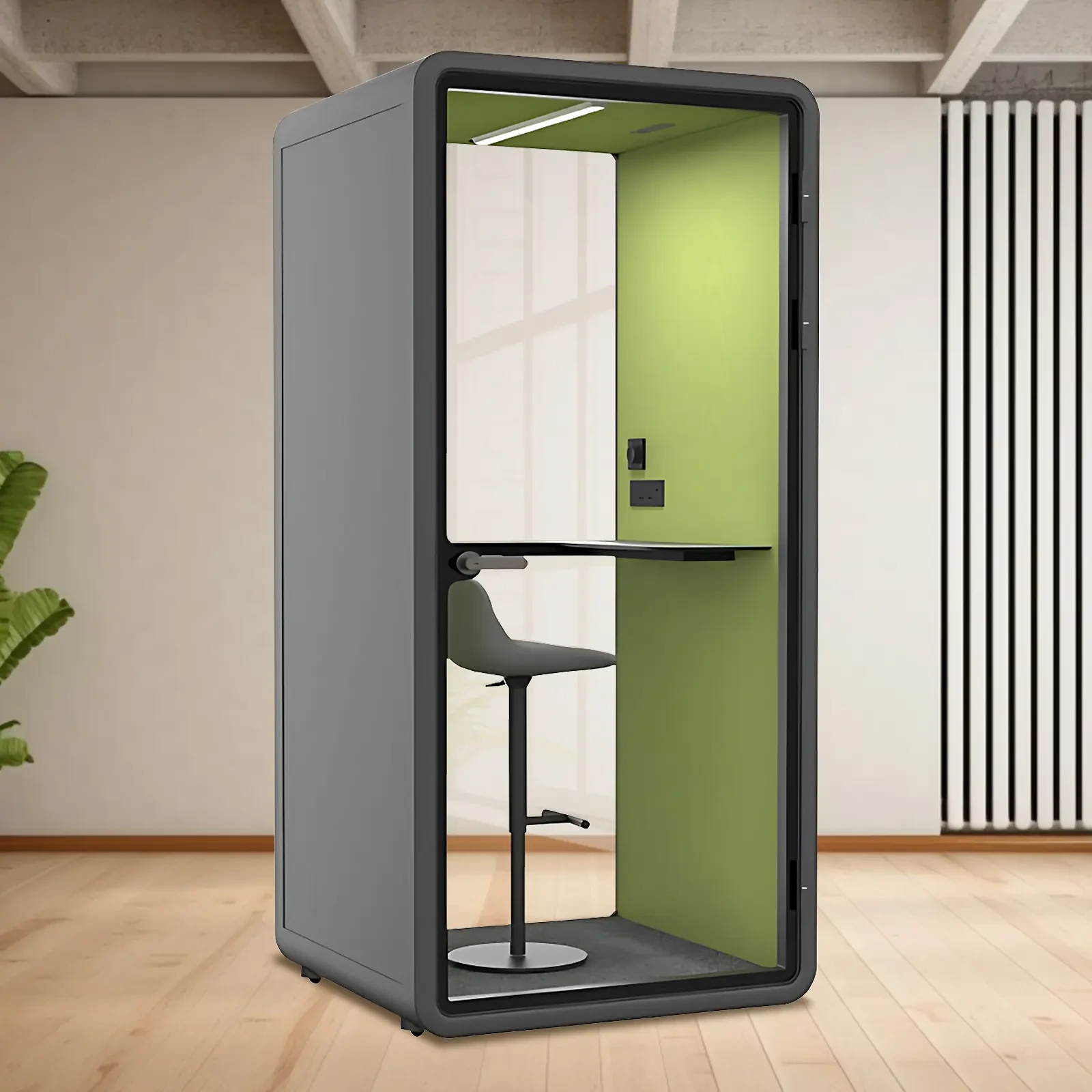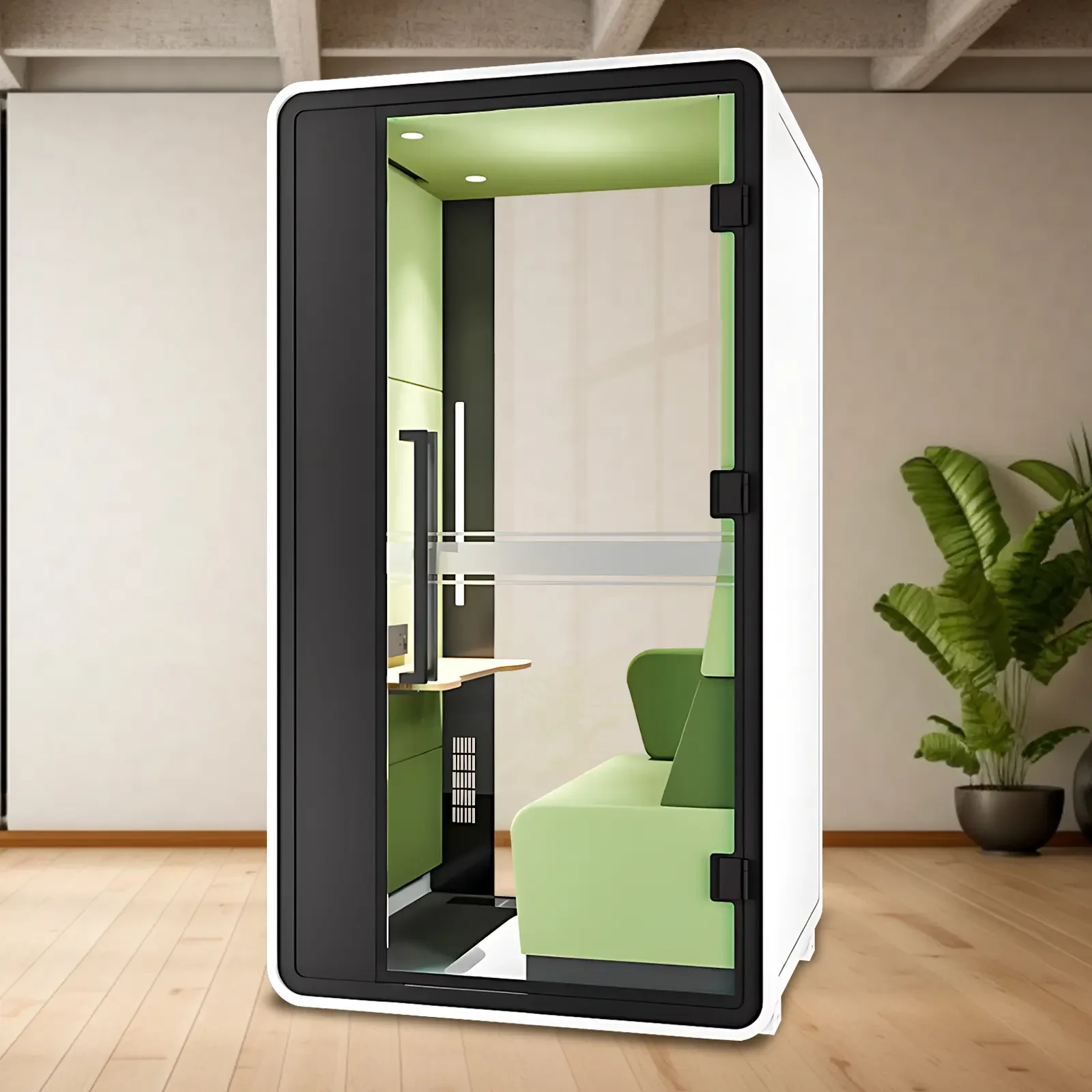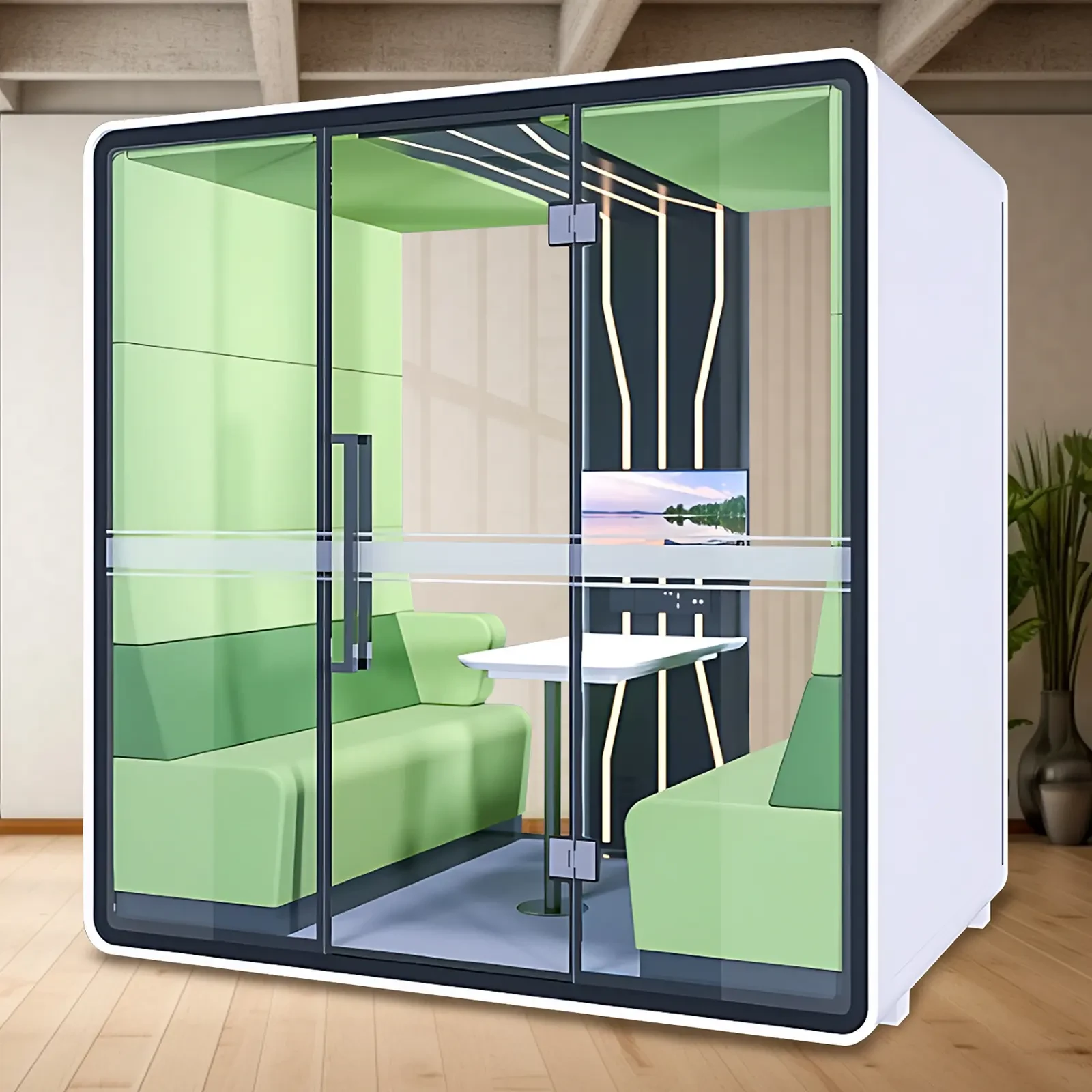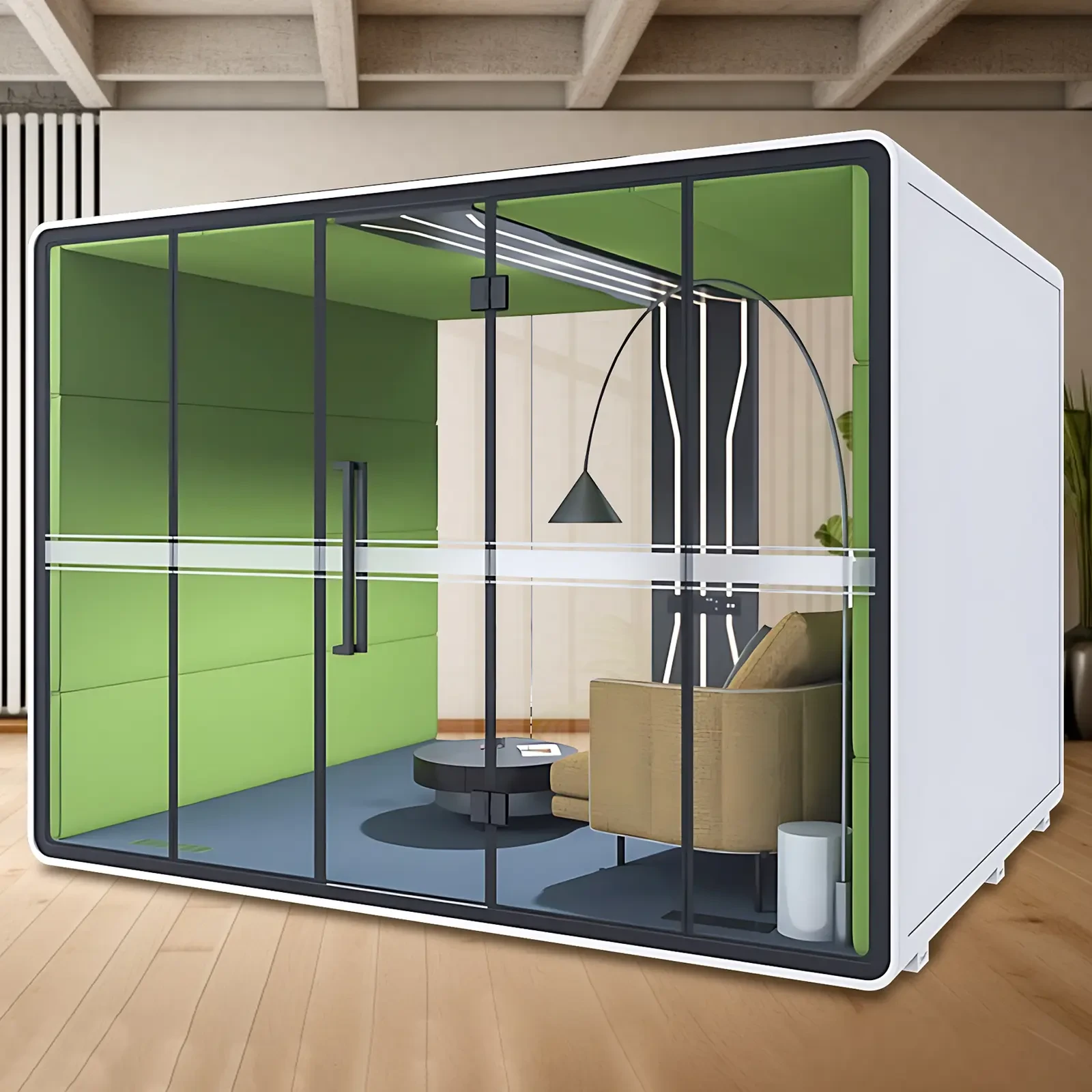A soundproof cabin is an enclosed space designed to isolate sound. Its soundproofing principles are primarily based on acoustic principles and the use of soundproofing materials. The following details the principles of soundproofing in a soundproof cabin:
Sound propagation and sound wave properties: Sound is transmitted through vibration. When a sound source (such as a human voice or machine noise) vibrates, molecules in the surrounding air also vibrate, forming sound waves. Sound waves propagate through the air and are reflected, refracted, and absorbed when they encounter obstacles. Within a soundproof cabin, we aim to minimize the penetration of sound waves through walls, thereby reducing the impact of external noise on the interior.
The use of soundproofing materials: The key to a soundproof cabin is selecting the right soundproofing materials. These materials have specific acoustic properties that reduce the transmission and reflection of sound waves. Common soundproofing materials include:
Sound-absorbing materials: Sound-absorbing materials absorb the energy of sound waves and convert it into tiny amounts of heat. These materials can be applied to interior surfaces such as walls, ceilings, and floors to reduce sound reflection and resonance within the room. Soundproofing: Soundproofing materials are used to increase the mass of walls to block the propagation of sound waves. High-density soundproofing materials can prevent sound waves from passing through walls, reducing the likelihood of sound transmission.
Soundproof windows and doors: Windows and doors are easily permeable to sound, so using them in a soundproof cabin can effectively reduce the ingress of external noise.
Multi-layer insulation: When designing a soundproof cabin, a multi-layer insulation design is often employed. Multi-layer insulation increases the path length for sound waves to propagate and improves soundproofing effectiveness by combining different materials. For example, a combination of sound-absorbing materials, sound-insulating materials, and air layers may be used within the walls.
Sealing: In addition to soundproofing materials, a soundproof cabin also requires good sealing. Sealing prevents sound from escaping or entering the cabin through cracks and gaps, thereby improving overall soundproofing effectiveness.
Structural design: The structural design of a soundproof cabin also affects soundproofing effectiveness. For example, double-walled walls and vibration-absorbing structures can reduce the transmission of sound waves. In summary, the soundproofing principles of a silent cabin primarily involve sound absorption, the use of soundproofing materials, multi-layer isolation, good sealing, and structural design. By combining these principles, effective soundproofing can be achieved, making the silent cabin a relatively quiet space isolated from the outside world.

 USD
USD
 GBP
GBP
 EUR
EUR






